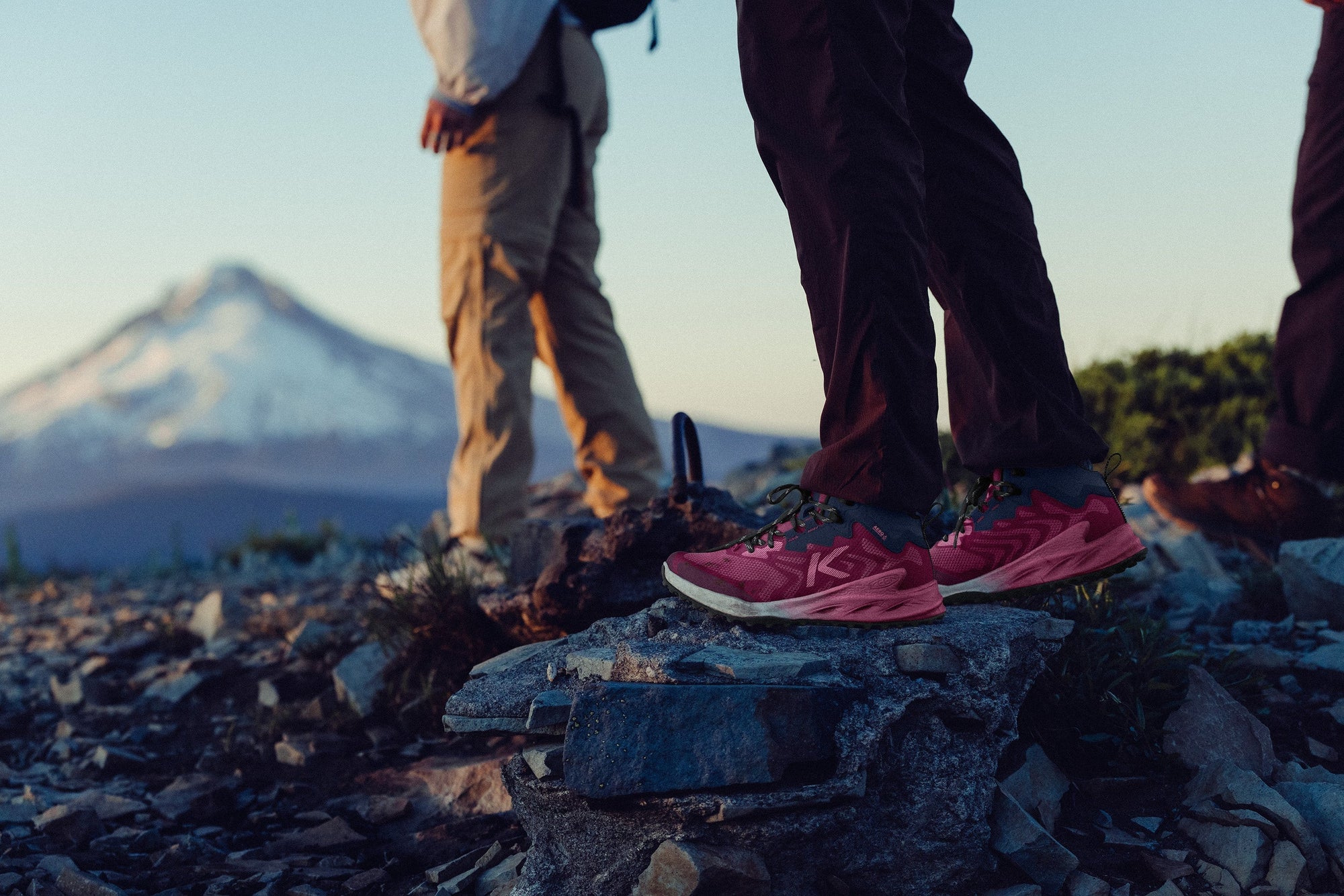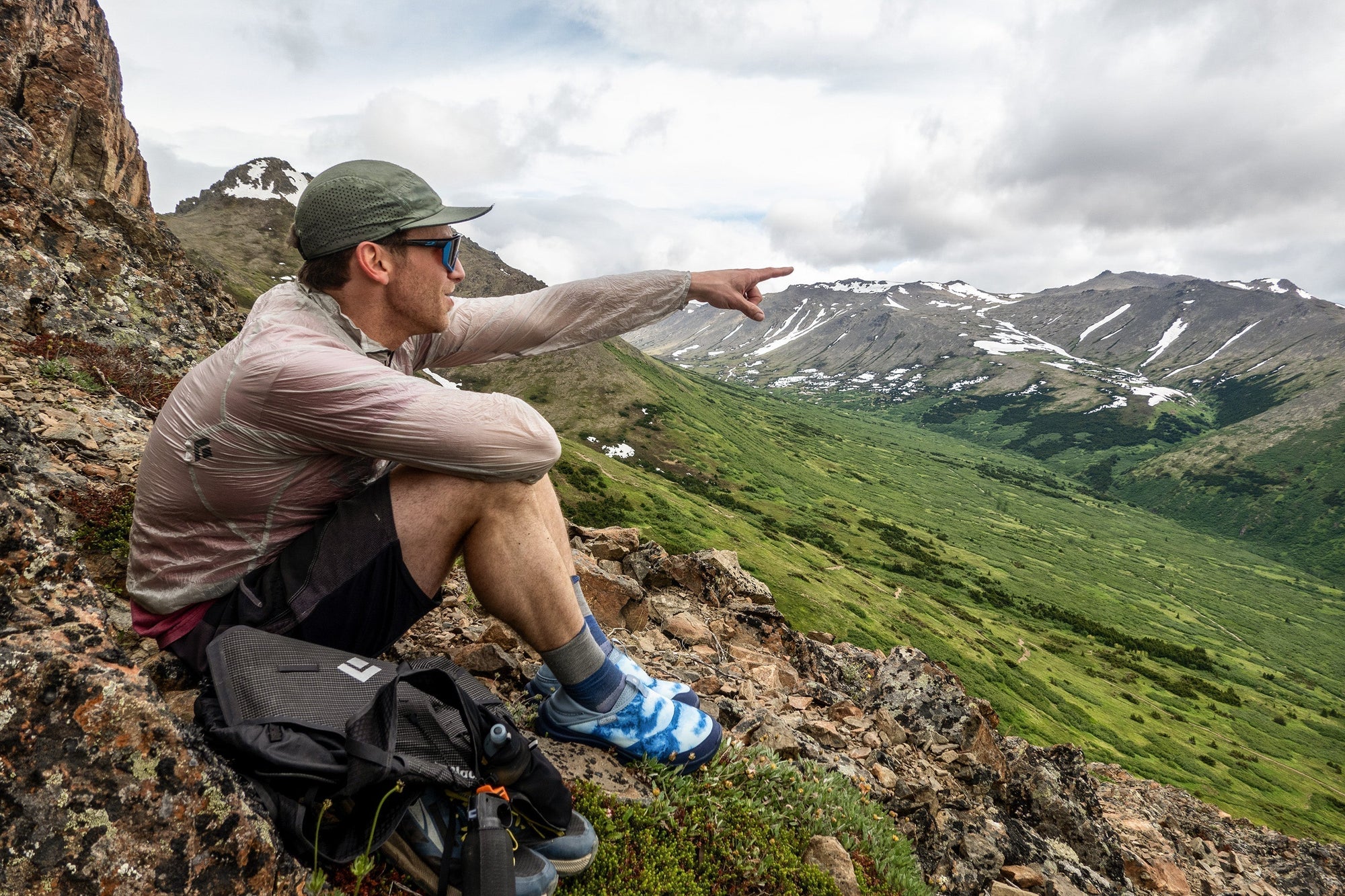Just like the plants in your garden, tiny feet need the right conditions in order to grow unrestricted. Correctly fitting shoes allow the little bones and muscles in kids’ feet to develop the way they should, not conform to the shape of the shoe, possibly causing problems later on down the road.
But sometimes it’s hard to tell if your kid is in need of a new pair of shoes or not. Luckily, science (and a good dose of patience) can help out when figuring out kids' shoe sizes.
1. Measure, Measure, Measure
Little feet grow fast. Based on growth patterns, it’s a good idea to measure at least every two months during your child's first year, and every three months from 1 to 8 years old. It seems like a lot, but remember, you are dealing with a “new” foot here! If you notice that your kiddo’s foot is bigger than the last time you measured . . . chances are, it’s time for a larger size.
A quick way to measure your kids' feet?
Download our printable, easy-peasy Kids' Sizing Chart (pdf).
Pro tip: If your kiddo has two different size feet, always go with the bigger one.
2. Write It All Down
It’s a good idea to keep a record of growth so that you know when kids’ feet are close to outgrowing their shoes. Plus, it’s fun to look back on the list later. Remember that year your youngest grew like a bean sprout!?
You may have heard of putting a thumb on the toe of the shoe to determine the correct size. Don’t trust your thumb. Try your index finger instead.
3. Give ‘Em a Little Space
Always be mindful of growing room. Translation? The amount of space between your kiddos tiny toes and the shoe toe. Ideally, you’re looking for 10mm of growing room for pre-walkers and 14mm for older children.
Did you know? You may have heard of putting a thumb on the toe of the shoe to determine the correct size, but typically (depending on the size of your hand) 10-14mm is smaller than the average adult thumb size. A good rule of thumb? Don’t trust your thumb. Try your index finger instead.

4. Listen and Look
Aside from measuring (which can’t always keep up with the surprise growth spurt), there are a few other ways you can tell if your kids’ shoes aren’t fitting correctly:
Too small? If your kid is constantly taking off their shoes, it could mean that their shoes are uncomfortable. If your little one puts up a fight every time you ask them to wear a certain pair of shoes, if they complain about playing, or you see blisters or red spots on their feet, it could mean that they are wearing shoes that are too small. If kids have other physical pain, too (knee, hip, or back pain) remember that it's all connected. It could be a good time to look at their footwear.
Too big? Although the common footwear issue for kids is outgrowing their shoes, wearing shoes they’re not quite ready for is another thing to keep an eye on. If your little one seems to be tripping a lot or dragging their feet (not intentionally like when you announce its time to leave the birthday party) chances are good that their shoes are a tad on the big side. Or is that a blister you spot? Yup, blisters can also appear when a shoe is too big. (Basically, blisters are a tell-tale sign that something just isn’t right.)
5. Find the Right Pair
Once you've measured your kid's feet to find the right size, our KEEN kinesiologist (yes we have a KEENesiologist) recommends looking at these things when your kid tries on new shoes.
Look at the old shoes: Notice any wear spots? Try to find a new pair of shoes that gives these spots more room. Make sure to look at both shoes!
Heel and instep: Ensure the heel is secure at the back of the shoe and that the instep is snug and comfy. You don’t want kids’ heels to feel constricted or to slip when they walk.
Foot flex: Look at where the foot flexes versus where the shoe flexes. Make sure that these line up, and that the shoes aren’t forcing your kid’s foot to move in an unnatural way.
Roomy toe box: Make sure there's room in the toe box. Avoid flat or pointy toe boxes. Opt instead for a more boxed or rounded toe. These shapes allow the toes to grow straight, giving them freedom and protecting against rubbing and bruising. Here is where you can also confirm that the growing room of any new pair is sufficient.
Overall fit: Give the shoes a squeeze, and feel how the shoe width feels on the foot. In true Goldilocks fashion, you don’t want them to be too tight or too loose.
Okay, so you think you’ve found the right pair of shoes for your kid’s growing feet? Now comes the fun part. Have kids get their wiggles out and test out the shoes they are trying on. Play a little game of Simon Says. “Simon says . . . hop on one foot. Simon says . . . do five jumping jacks!” Be sure to ask your kid questions about how the shoes feel too. “Can you wiggle your toes? Do your feet slide around? Do the shoes slip in the heel?” Keep an eye on whether their walk looks natural (as natural as a newly walking life form can look). If everything looks good, congratulations. You’ve found the right pair.
RELATED: Which Toddler Shoes for New Walkers
Our KEENesiologist and kid-iologists (aka parents) agree, comfortable, great fitting footwear keep kids’ feet healthy and on the move (and smiling while they’re at it). Still have questions on how to outfit your kiddo in the right KEEN shoes, boots, or sandals? Get in touch! We’re available by phone, email, or chat to help.











